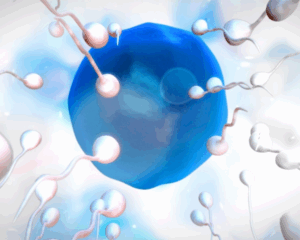
Prolistem for Non-Obstructive Azoospermia: A Comprehensive Guide
Prolistem for non obstructive azoospermia, Non-obstructive azoospermia (NOA)

Male infertility, especially caused by azoospermia, affects millions of men worldwide. For those suffering from non-obstructive azoospermia, treatment options have been limited. However, thanks to recent advances in science, gene therapy for azoospermia treatment is emerging as a revolutionary solution.
This blog explores how gene therapy is transforming azoospermia treatment, from understanding the genetic basis to discussing its future potential in clinical practice. Whether you’re a patient, a healthcare provider, or someone curious about medical innovation, this in-depth article will give you everything you need to know.
Azoospermia is a medical condition where a man’s semen contains no measurable sperm. It affects roughly 1 in 100 men and contributes to 10–15% of male infertility cases.
There are two main types:
Obstructive Azoospermia (OA): Sperm is produced but cannot reach the semen due to a blockage.
Non-Obstructive Azoospermia (NOA): The testicles fail to produce sperm due to genetic or hormonal reasons.
While OA can often be treated with surgery, NOA has been historically more difficult to manage—until now.
Genetic defects are a major cause of non-obstructive azoospermia. Some common genetic contributors include:
Y-chromosome microdeletions (especially AZF regions)
Klinefelter Syndrome (47, XXY karyotype)
Mutations in genes like TEX11, NR5A1, and SYCP3
Congenital bilateral absence of vas deferens (CBAVD) linked to CFTR mutations
These genetic issues disrupt spermatogenesis, the process by which sperm is created, and until recently, they were considered untreatable.
Gene therapy involves altering the genetic material inside a person’s cells to correct or replace defective genes. There are three main types:
Gene replacement – replacing faulty genes with functional copies
Gene editing – using tools like CRISPR-Cas9 to correct mutations
Gene silencing – turning off genes that cause disease
In the case of azoospermia, gene therapy focuses on repairing or activating genes responsible for sperm production.
Let’s break down the process of how gene therapy could treat azoospermia:
The first step is performing genetic testing to identify mutations. Common diagnostic tools include:
Whole-exome sequencing (WES)
Targeted mutation panels
Karyotyping
Once the mutation is identified, scientists design a strategy to:
Replace the gene (e.g., via viral vectors)
Edit the gene using CRISPR
Restore function using RNA or exosome-based therapies
Using techniques like:
Intratesticular injection
Nanoparticles
Adeno-associated virus (AAV) vectors
These deliver the edited or corrected gene directly into the affected cells in the seminiferous tubules, where sperm production occurs.
If successful, spermatogenesis may resume after several weeks or months, with measurable sperm found in follow-up semen analyses.
Though gene therapy for azoospermia is still in early stages, several promising studies exist:
Researchers successfully used CRISPR-Cas9 to restore fertility in mice with Y-chromosome deletions. Sperm production resumed, and offspring were born.
A team used gene-editing tools to correct XXY chromosomal patterns in mouse models. Treated mice showed improved testicular function.
Early-phase trials are testing AAV vectors for azoospermia in men with NR5A1 mutations and AZFc deletions. Results are pending but show high safety and tolerability.
These breakthroughs suggest that gene therapy for azoospermia treatment may soon be a viable option for human patients.
✅ Treats the root cause, not just symptoms
✅ Potential for natural conception
✅ Reduces dependence on IVF or sperm donors
✅ Long-term solution after a single treatment
✅ Personalized medicine tailored to your genetics
No medical innovation is without risk. Gene therapy brings challenges, including:
Off-target effects: CRISPR may accidentally edit the wrong gene
Immune reactions: The Body may reject viral vectors
Long-term safety: Unknown impacts on future offspring
Germline editing concerns: May pass changes to next generations
Ethical oversight is critical, especially for heritable gene editing. Most experts recommend using gene therapy for somatic cells only, which affects only the treated individual, not their children.
| Treatment | Success Rate | Invasiveness | Availability | Cost Estimate (USD) |
|---|---|---|---|---|
| TESE + IVF/ICSI | 40–60% | Moderate | Widely Available | $10,000 – $20,000 |
| Hormonal Therapy | 20–30% | Low | Limited by case | $1,000 – $3,000 |
| Donor Sperm IVF | 90%+ | Moderate | Widely Available | $5,000 – $15,000 |
| Gene Therapy | 70%+ (in mice) | Low–Moderate | Experimental Phase | $10,000 – $50,000 |
Note: Gene therapy remains experimental and may not be widely accessible for several more years.
Gene therapy may be a future option for men with:
Y-chromosome microdeletions (AZFa, AZFb, AZFc)
TEX11 or SYCP3 mutations
Klinefelter Syndrome
CBAVD due to CFTR gene defects
Failed TESE or hormonal therapy
It’s best suited for non-obstructive azoospermia where the genetic cause is well-understood.
If you’re facing infertility, talk to a reproductive urologist about genetic testing. Recommended tests include:
Semen analysis (confirm azoospermia)
Hormone testing (FSH, LH, testosterone)
Karyotype and Y-chromosome microdeletion tests
Gene panels for infertility mutations
You may be referred to a genetic counselor to understand your results and explore future options, including gene therapy.
While gene therapy is being researched, you can support your fertility health through:
Healthy diet: High in antioxidants, zinc, and folate
Regular exercise: Promotes hormonal balance
Avoiding toxins: Reduce exposure to pesticides, plasticizers, and radiation
Quitting smoking & alcohol: Both damage sperm DNA
Stress management: Cortisol imbalances may impair hormone function
These won’t reverse genetic azoospermia but may help maximize any remaining reproductive potential.
Experts predict that gene therapy will reshape male infertility treatment within the next decade. As clinical trials progress, we may see:
FDA-approved therapies for azoospermia
Increased access through fertility clinics
Combination therapies (e.g., gene therapy + stem cells)
Regulated germline editing (with ethical safeguards)
With continued investment and responsible research, gene therapy for azoospermia treatment could shift the paradigm from managing infertility to curing it.
Q: Is gene therapy currently available for azoospermia?
A: Not yet widely. Clinical trials are ongoing. Consult a fertility specialist for updates.
Q: Is gene therapy safe?
A: Early trials show it’s generally safe, but long-term effects and ethical concerns remain.
Q: Can gene therapy restore sperm production permanently?
A: In animal models, yes. Human trials are underway to assess permanence.
Q: How soon will it be available to the public?
A: Experts estimate 5–10 years for widespread access, depending on trial outcomes and regulations.
Male infertility has long posed emotional and medical challenges. But with the rise of gene therapy, the future looks far more hopeful. While still in development, gene therapy azoospermia treatment promises to correct the underlying genetic causes of infertility, allowing men to father biological children—something once thought impossible.
If you’re facing azoospermia, don’t lose hope. Speak to a fertility specialist, ask about clinical trials, and stay informed on new advancements. The next wave of genetic medicine may be your key to becoming a father.

Prolistem for non obstructive azoospermia, Non-obstructive azoospermia (NOA)

Introduction Male infertility, especially caused by azoospermia, affects

We are proud to have participated in the

Introduction: A New Hope in Male Infertility Treatment